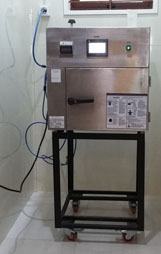Medical equipment sterilization is a critical aspect of healthcare, ensuring that instruments are free from harmful microorganisms. As technology advances, the future of medical equipment sterilization is marked by emerging technologies and sustainable practices that promise to make healthcare safer and more environmentally friendly.
The Ever-Evolving Landscape of Medical Equipment Sterilization
Sterilization is a constant in healthcare, but the methods and technologies have evolved over time. The future of medical equipment sterilization embraces innovation to enhance effectiveness and address challenges.
Challenges in Conventional Sterilization Methods
3.1 Slow Sterilization Cycles
Traditional sterilization methods, like autoclaving, can be time-consuming, impacting the speed of healthcare delivery. Rapid sterilization is increasingly important, especially in emergency situations.
3.2 Material Compatibility
Complex medical instruments and materials may not be compatible with standard sterilization methods, limiting their use in healthcare settings.
3.3 Environmental Concerns
Many conventional sterilization methods use hazardous chemicals or high energy consumption, posing environmental concerns. There is a growing need for more sustainable practices.
Emerging Technologies in Medical Equipment Sterilization
4.1 Cold Plasma Sterilization
Cold plasma sterilization is an emerging technology that uses ionized gas to eliminate microorganisms. It offers rapid sterilization cycles, making it suitable for sensitive instruments and emergency situations.
4.2 UV-C Sterilization
UV-C sterilization utilizes ultraviolet light to disrupt the DNA of microorganisms, rendering them harmless. It is effective and environmentally friendly, with no chemical byproducts.
4.3 Sterilization Robotics
Robotic systems are being developed to perform sterilization processes autonomously, ensuring precision and reliability. These robots can work efficiently in various healthcare settings.

Sustainability and Environmental Impact
5.1 Green Sterilization Practices
Sustainable sterilization practices aim to reduce the environmental footprint of sterilization methods. This includes minimizing chemical use and energy consumption.
5.2 Eco-Friendly Sterilization Packaging
Innovations in packaging materials aim to reduce waste and environmental impact. Biodegradable and reusable packaging options are emerging.
Future Trends and Innovations
The future of medical equipment sterilization is marked by several exciting trends and innovations, including:
- Nanotechnology: Nanomaterials and nanoparticles are being explored for their antimicrobial properties, offering a new dimension to sterilization.
- Artificial Intelligence: AI is used to optimize sterilization processes, monitoring equipment, and ensuring precise and efficient sterilization.
- Electrolyzed Water: Electrolyzed water is gaining attention for its disinfection properties, offering a sustainable alternative to chemical sterilization.
- Smart Sterilization Packaging: Intelligent packaging systems that monitor sterility and provide real-time data are on the horizon.
Conclusion
The future of medical equipment sterilization is a dynamic landscape of emerging technologies and trends that address the challenges of conventional methods. These innovations aim to make sterilization processes faster, more effective, and environmentally friendly. Sustainable practices and the adoption of cutting-edge technologies will continue to enhance patient safety and the sustainability of healthcare.
FAQs
1. How does cold plasma sterilization work?
- Cold plasma sterilization uses ionized gas to eliminate microorganisms by disrupting their cellular structures.
2. Are UV-C sterilization devices safe for use in healthcare settings?
- UV-C sterilization is safe when used correctly, as it does not leave chemical residues or byproducts.
3. What are the benefits of sterilization robotics in healthcare?
- Sterilization robotics provide precision, efficiency, and consistency in sterilization processes, reducing the risk of human error.
4. How can nanotechnology be used in sterilization?
- Nanomaterials and nanoparticles are explored for their antimicrobial properties, potentially enhancing the effectiveness of sterilization methods.
5. What are some examples of sustainable sterilization practices?
- Sustainable practices include reducing chemical usage, optimizing energy consumption, and using environmentally friendly packaging materials.





